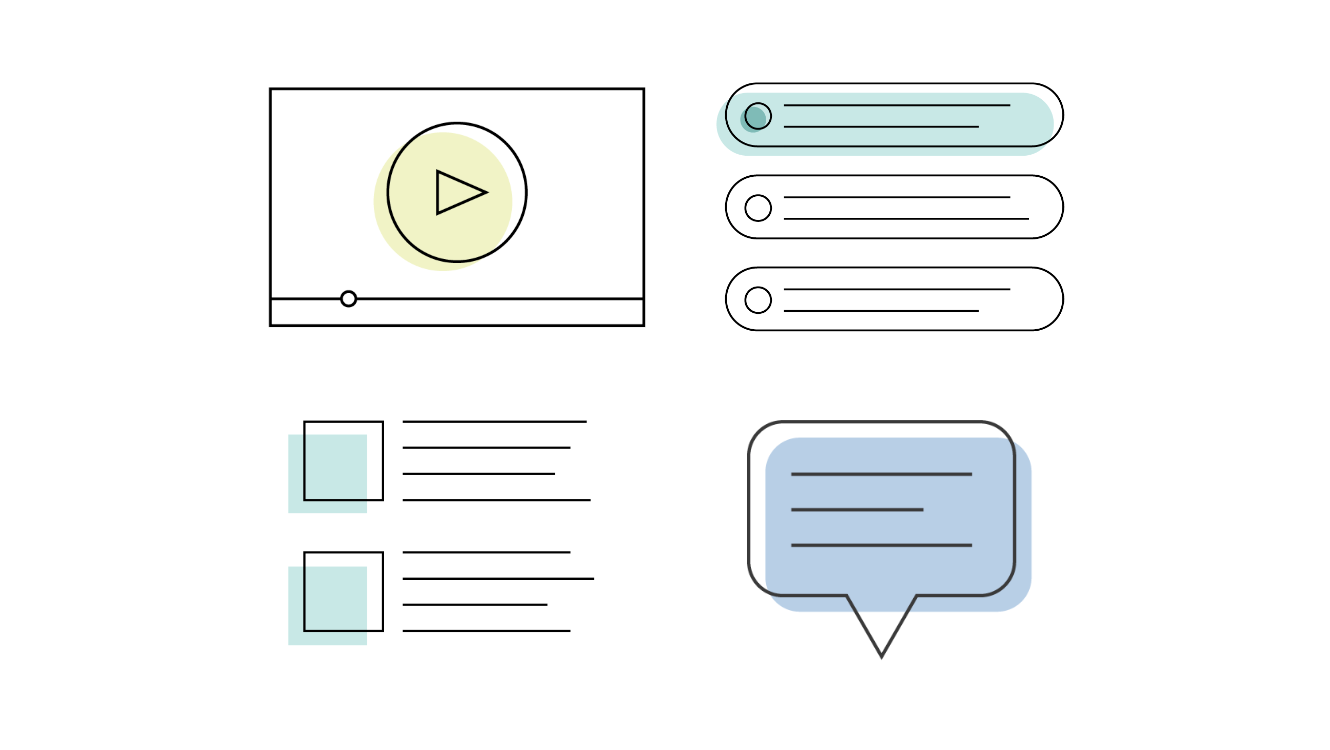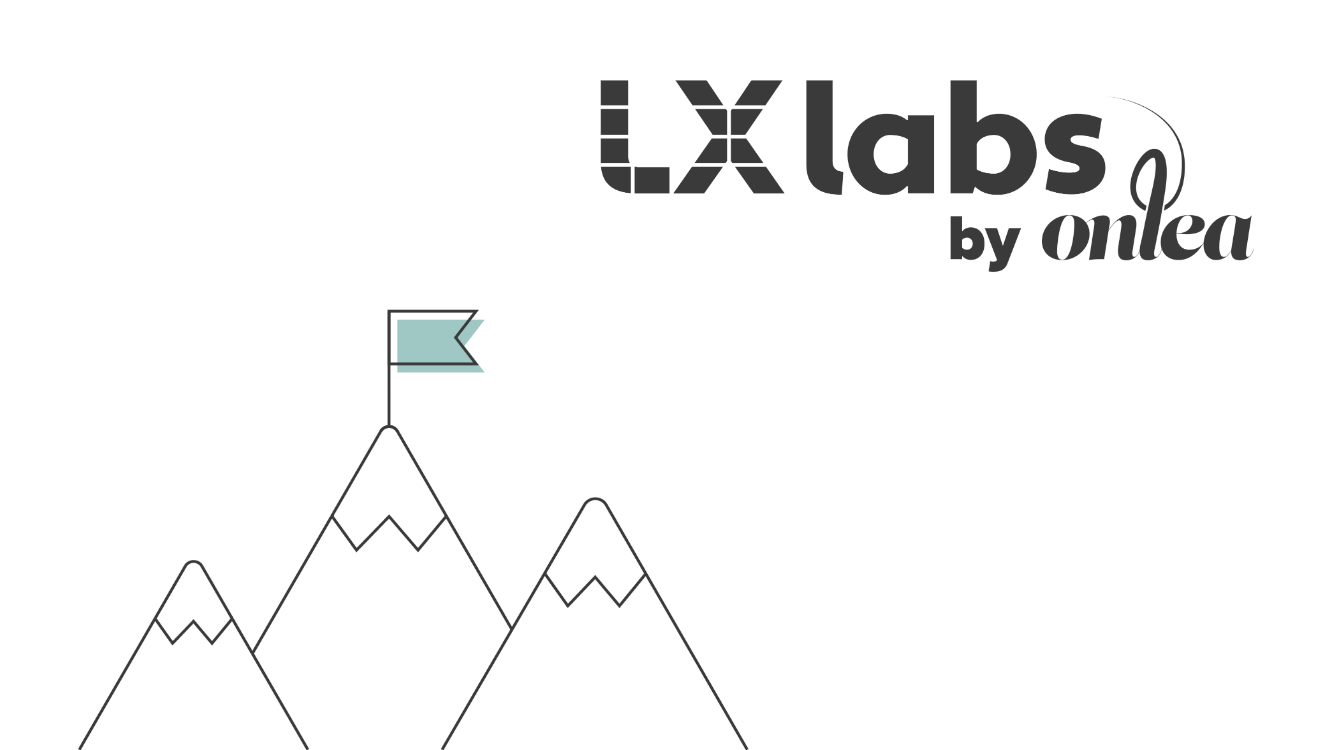So What is Learning Experience Design (LX), Anyway?
LX stands for learning experience. When we design courses and consult with course creators, our LX approach combines research, best practices, and innovations that put the learner at the centre.
Pioneer LX Designer Niels Floor defined LX this way:
“Learning experience design (LX Design) is the process of creating learning experiences that enable the learner to achieve the desired learning outcome in a human centered and goal oriented way.”
- Niels Floor
LX design is a process, a strategy, a set of principles, and a body of expertise. It brings together the disciplines of interaction design, UX, graphic design, game design, instructional design, cognitive psychology, experiential learning, educational sciences, and neuroscience.

Why Does that Sound Familiar?
User Experience, or UX, was defined by design icons Don Norman and Jakob Nielsen as encompassing all aspects of an end-user’s interaction with a company and its offerings. UX is perhaps best known in the field of digital media, where it is the foundation of design. Whether you are aware of them or not, the principles of UX are baked into most of your online interactions, from shopping to doomscrolling. Simply put, to be successful in a crowded sphere, websites and digital products need to be mindful of the experience of their target users.
Learning online is no different. In many ways, working through a course is similar to buying a vintage lamp or reading the fan gossip about the next superhero movie. Here’s why:
- Learners and users want to find the content that they need.
- They both want to work through the content without barriers or frustration.
- They both want to experience joy in the process. Yes, joy!
In the education and training world, we call this natural overlap LX. Just as UX focuses on the experience of the user, LX focuses on the experience of the learner. That might seem obvious, but if you think about it, you’ve probably had countless education experiences that were more focused on the instructor or the content than on your experience as learner—whether it was that boring chemistry class in high school or the mandatory “Information Security” eLearning you had to take in your last job.
For course creators, focusing on the learner means knowing who they are—their challenges, their motivations, their goals. It means honing content to meet their needs. It means drawing on cognitive science and research in instructional design to create experiences that maximize learning. And it means making the journey intuitive and seamless.
Identifying the Learner
Good learning design starts with knowing your learners. If you know what motivates them, you can design your course to tap into that motivation. If you know what their goals are, you can tailor your content to meet those goals. And if you understand their challenges or barriers, you can mitigate them with your design.
The field of UX design gives course designers great tools to do this. Empathy mapping is an exercise that helps identify goals, challenges, learning environments, and the learners’ feelings at each step. Journey mapping helps plot out the learner’s path through the course, from how they find it to whether they get a certificate of completion. Learner personas create fictional learners that are representative of your target audience, to help you match the learning experience to real people.
Think back to that “information security” course I mentioned. If your empathy map tells you the learners are only doing the course because they have to, you can focus some of your content on conveying the importance and value. If your journey map shows you that they are trying to fit it in between meetings and deadlines, you know to break it up into short, standalone chunks. If your learner persona is “Amy,” a busy professional with ten years on the job, you can start to empathize with her—she’s had to take this content every year. Maybe you can incorporate a pre-test that allows her to find her own path through the content, based on what she already knows.
Once learners are identified, talk directly to them if you are able. Often, it’s HR personnel, managers, or professors who own a course and provide designers with information. But it is easy for there to be a disconnect between what the course owners think a learner’s needs are, and what those needs are in reality. Focus groups or other forms of research can provide valuable insight. A conversation with a learner might reveal that the problem with a new data process isn’t that they haven’t been trained, but that it takes ten times as long to complete a job when they follow it. Or it might reveal that learners don’t understand legislative procedure because they haven’t yet learned the parliamentary structure.

Identifying the Content
Too often, instructors or organizations start with the content—they make a long list of everything that they think learners should know, and then put it in. That approach comes with several risks:
- The course content doesn’t actually meet the learner’s needs or goals
- The learner doesn’t learn as much because they don’t see the purpose or value to them
- The learner doesn’t learn as much because their cognitive capacity is used up with extraneous information
It takes a lot of careful planning—and some understanding of cognitive science—to identify goals, desired learner competencies, learning objectives, and the content needed to meet those competencies.
Instructional Design
Once that key content is identified, you have to make sure that it is presented using plain language, the right media, and a logical flow.
LX designers make evidence-based recommendations and decisions about structure, navigation, functionality, and even graphics or gamification. LX designers know that active learning is powerful, and design interactions that engage learners, reinforce learning, and help learners apply the content to the world beyond the screen. They know that storytelling can help to bring it all to life—remember the “joy” I mentioned?
They also build assessments that are reflective of the learning outcomes, and can solidify learning or constitute a defensible exam proving competency.
Usability Heuristics
Fundamental to UX design are usability heuristics—10 principles originally defined by UX Design leader Jakob Nielsen. These principles ensure that users can navigate the course in an intuitive way, find what they need, and recover from mistakes. When you are scrolling through the movies on a streaming service, you want the controls to be familiar and predictable, you want to move freely, and you want to be able to go back if you get into the comedy section when you’re looking for a thriller. The same principles apply to learning.
If something in a blue box is selectable on one slide, you want it to be selectable everywhere. If you want to pause and rewind the voiceover, you should have the control to do that. You want to know where you are in the course, and know where to look for help if you need it.
LX means thinking about learners not as passive recipients of content sitting at a desk, but as active participants in their own learning, who are constantly making decisions as they navigate the course.

Iterating and Testing
An iterative design and development process, with lots of opportunities for review and testing, is critical for ensuring that the design aligns with the organization’s style and the learner’s profile.
There are a number of different iterative processes for design in both the fields of UX and instructional design, which can inform a learner-centred development. Terminology varies depending on the designer, but a development will typically include phases such as:
- Style guide or wireframe
- Storyboard or script
- Prototype or minimum viable product
- Review candidate, beta version, or pilot
At each stage, various combinations of QA, stakeholder review, and end-user testing are key to catching everything from navigation problems to technical bugs to typos.
This process doesn’t necessarily end with the launch of a course. Ongoing evaluation is important for ensuring that the course is successful. Again, there are different approaches to and levels of evaluation, from assessments to surveys to large-scale data collection, but ultimately you want to find out:
- Did learners like it?
- Did learners learn from it?
- Can learners apply what they learned beyond the course? Do they?
- Do learners remember and apply what they learned three months, six months, or a year down the line?
- Did the course help to achieve any broader organizational goals?
Bringing it All Together
If you are feeling overwhelmed, don’t be! If you are an instructor or a subject matter expert, you are an expert in the content you teach. At Onlea LX Labs, we are experts in LX. If you’d like to learn more from us, explore our webstore, join our LinkedIn group, Course Creator Q&A, and ask us your questions, or reach out to our experts to see how we can customize our experience to your needs.
